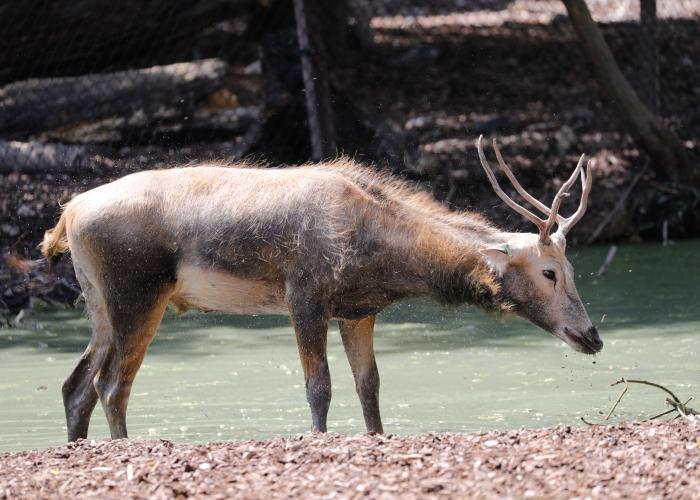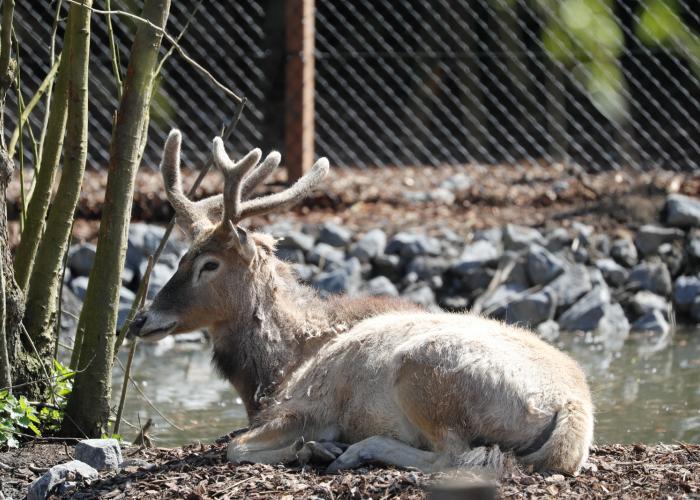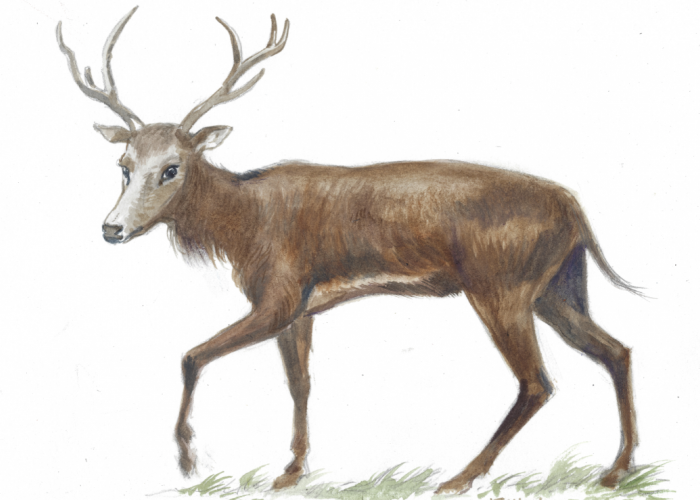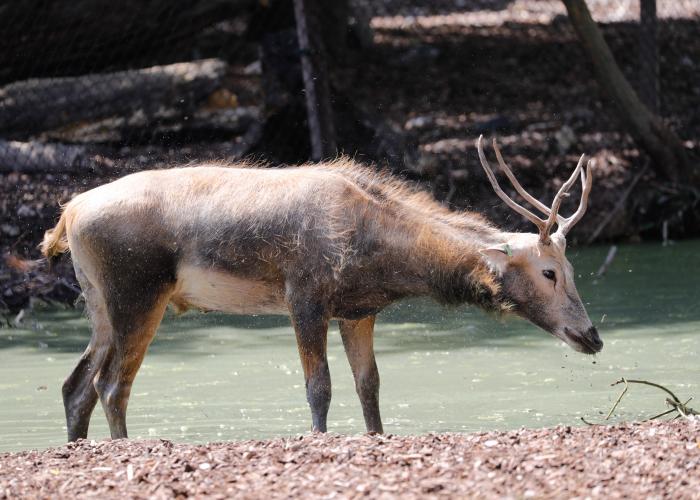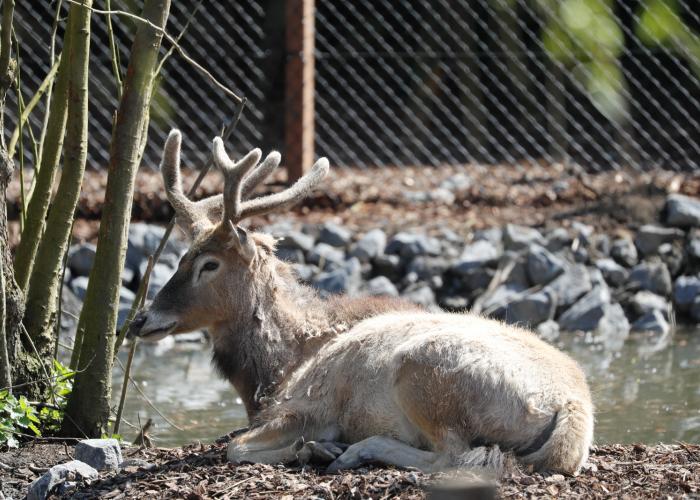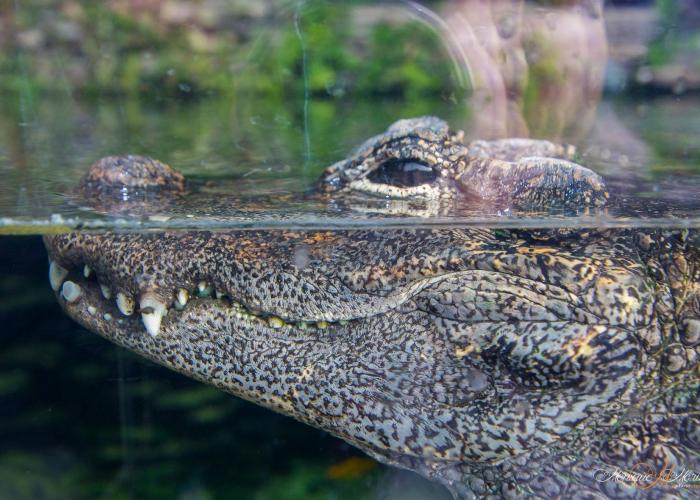Exctinct in the wild
Originating from the swampy regions of Northern and central China, this big deer is extinct in the wild and only survives in captivity. It was discovered (for the West) in 1865 by Père Armand David, a French missionary and naturalist, who found a herd after climbing the wall of the Imperial hunting park near Beijing. Some specimens were laboriously sent to Europe, which saved the species because the stock of the Imperial palace was decimated by a flood and then killed and eaten by the Japanese and European troops during the Boxer rebellion war. At the turn of the 20th century, the 18 surviving adult animals in European zoos were entrusted to the Duke of Bedford, who bred them at his Woburn Abbey domain. All the living Père David’s Deer in the world to date - some 2000 individuals - originate from that breeding. Having recovered a few specimens, China is trying to reintroduce the species in its native habitat. The Père David’s Deer is a pretty massive animal, weighing up to 200 kg: it has broad spread hooves, which is an adaptation to its semi-aquatic life.
Identiteitsfiche
- Name : Père David's Deer
- Latin Name : Elaphurus davidianus
- Origin : China
- IUCN Status : Extinct in the wild
- Cites : --
